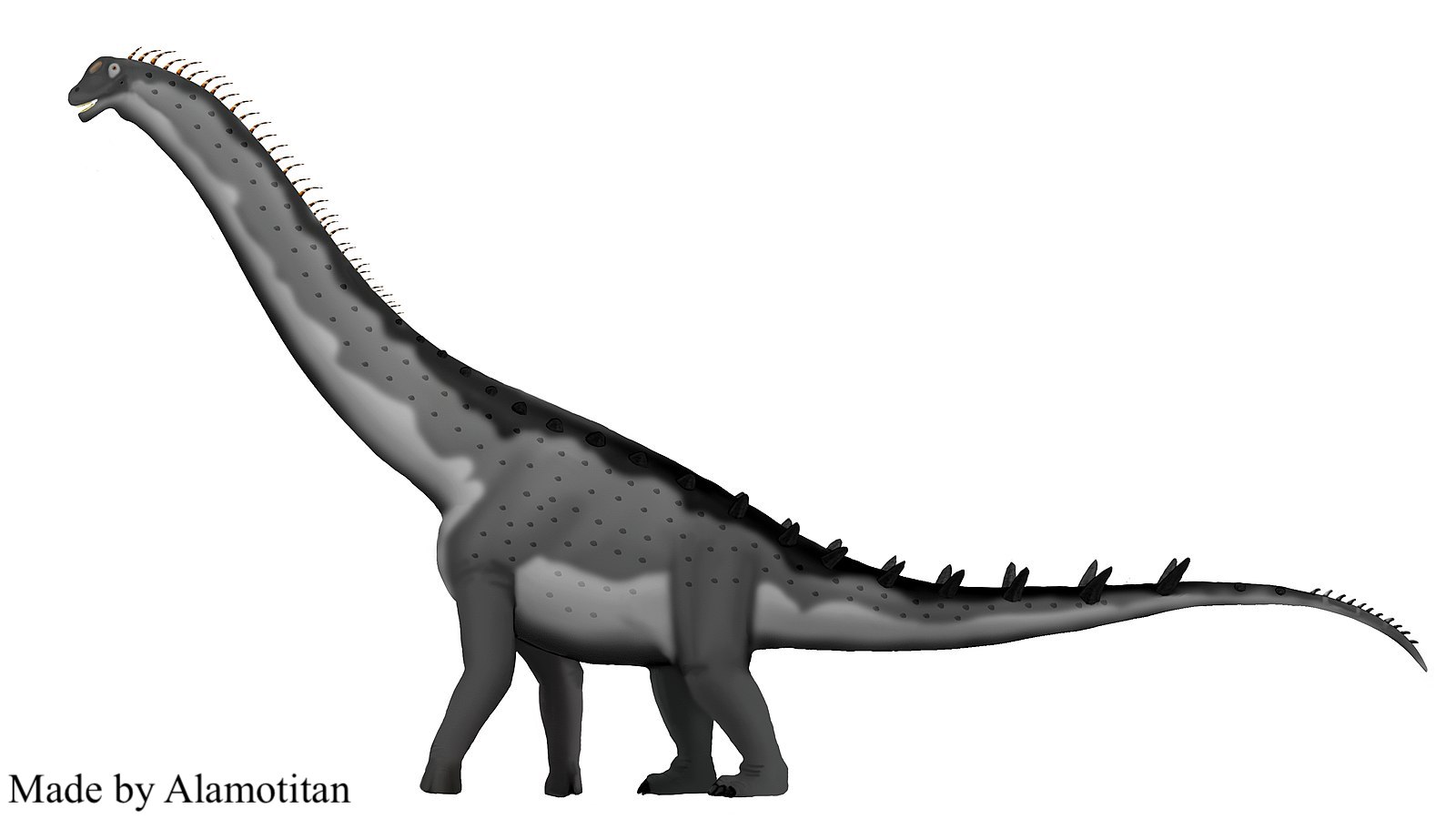Welcome to Alamosaurus

Name Definition
Alamo lizard (named after the Ojo Alamo Formation in New Mexico)
Name Given By
Charles W. Gilmore in 1922
Location
Ojo Alamo Formation from New Mexico ; North Horn Formation of Utah ; Black Peak Formation, El Picacho Formation, and the Javelina Formation from Texas
Classification
Dinosauria, Saurischia, Sauropoda, Macronaria, Titanosauria, Lithostrotia, Saltasauridae, Opisthocoelicaudiinae
Size
8 - 10 meters tall, around 26 - 30 meters long, 2020 estimates suggest around 30 tons
Temporal Range
Maastrichtian stage of the late Cretaceous, ~70 - 66 million years ago
Ecological niche
large herbivore
Species/Sub Species
A. sanjuanensis
Diet
Alamosaurus would have been able to access higher plants like tree leaves unlike the smaller herbivores it lived with
Introduction
Alamosaurus is a genus of titanosaurian dinosaurs that lived around the southern portion of the U.S. (not the exact region) during the late Cretaceous. Alamosaurus is always thought to have been named after the Alamo mission, the site that was where one of the most important battles of the Texas Revolution took place. Contrary to popular belief, this is an inaccurate assessment, and it was actually named after the formation it was first found in, the Ojo Alamo Formation in New Mexico. The species name, sanjuanensis, simply means “from San Juan” which is the county where Alamosaurus was first discovered. Alamosaurus was on the big side of the titanosaur size spectrum, the group of sauropods that were the most common during the Cretaceous and were also the biggest of animals. There have been several remains attributed to Alamosaurus, and the adult is of course partial due to the fact that some animals are too big that their fossils are unlikely to be complete. However, the skeletons of the juveniles are much more complete since they were smaller than the adults, though small animals also do not fossilize completely. Comparison of the juvenile skeletons with the adult ones indicate that it would have been approximately 30 meters long once it reached adulthood. Moving onto the cranial elements, the skull is unknown, however, some dentition was discovered and have been described as “slender and rod-like”, possibly allowing it to clip tree leaves off of trees. Unlike some other titanosaurs, osteoderms are absent on the back of Alamosaurus and no skeletons have been found to have osteoderms on it. The fact that Alamosaurus has been found in the southern portion of the U.S. also proves that sauropods had not disappeared from North America since the end of the Jurassic, when diplodocids and brachiosaurids roamed the area. However, most sauropods have been known to live in dry and arid environments, similar to today’s African elephants, and these areas would have not been common during the late Cretaceous in North America, due to the Western Interior Seaway which submerged the middle region of North America underwater at the time, technically splitting the continent into two but were still intact below. Perhaps the distribution of any species comes down to how abundant suitable habitats can be found somewhere, which might explain why North American sauropods are not as common as they were during the Jurassic, when the Western Interior Seaway had not formed yet in North America. While some examples of North American sauropods are still known from the Cretaceous including Sauroposeidon from Texas, it seems that sauropods in North America were started to be getting replaced by other herbivores such as ceratopsians and ornithopods. While there may be many more North American sauropods that have yet to be discovered, it is still likely that sauropods in late Cretaceous North America would not be as common as they were during the late Jurassic. Alamosaurus was contemporaneous with other dinosaurian and non-dinosaurian genera including Tyrannosaurus, Ojoraptorsaurus (also named after the Ojo Alamo Formation), Gryposaurus, Kritosaurus, Glyptodontopelta, Torosaurus utahensis, Bravoceratops, and Ojoceratops, while some non-dinosaurian genera include the azhdarchid pterosaur Quetzalcoatlus, as well as some smaller critters.